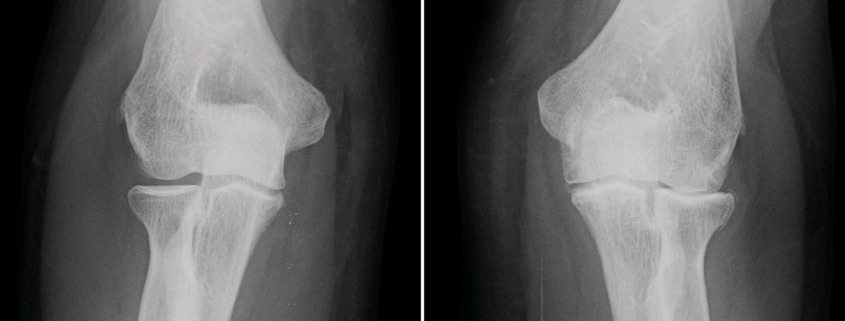Elbow Arthritis

Overview
Elbow arthritis is a condition that affects the joint where your forearm meets your upper arm, causing pain, stiffness, and reduced mobility. As arthritis progresses, it can significantly impact your ability to perform daily activities that require arm movement. Though less common than arthritis in areas like the knee or hip, it is by no means a rare condition.
Types
Two main types of elbow arthritis are generally diagnosed: Osteoarthritis and Rheumatoid arthritis.
Osteoarthritis: Also known as wear-and-tear arthritis, this is the most common type among older people. It occurs when the cartilage that cushions your elbow joint wears down over time, leading to the bones rubbing directly against each other.
Rheumatoid arthritis: This is an auto-immune disorder where the body’s immune system attacks the tissues of the joint, causing inflammation and discomfort. Unlike osteoarthritis, rheumatoid arthritis can occur at any age.
Causes
Numerous factors contribute to the onset of elbow arthritis, including:
1. Age: Arthritis mainly affects older individuals as the cartilage naturally wears down over time.
2. Genetics: A family history of arthritis increases your risk.
3. Injuries: Previous elbow injuries or fractures may hasten the development of arthritis.
4. Overuse: Repetitive elbow movements, particularly in certain occupations or sports, can lead to wear and tear.
Symptoms
Common symptoms of elbow arthritis include:
– Pain and stiffness, especially in the morning or after periods of inactivity.
– Swelling, redness, and warmth around the joint.
– Difficulty in bending or straightening the elbow.
– A grinding or clicking sound when you move your elbow.
Diagnosis
To diagnose elbow arthritis, your healthcare provider will perform a physical examination and may order imaging tests like X-rays or MRI scans to assess any damage or inflammation in the joint. Sometimes a blood test may be required to confirm rheumatoid arthritis.
Treatment Options
While there is no cure for arthritis, treatment aims to relieve symptoms and improve joint function. This includes:
Non-surgical treatments:
– Pain-relieving medications like NSAIDs.
- Physical Therapy and exercises to increase strength and flexibility.
– Corticosteroid injections for temporary relief from inflammation.
Surgical treatments: If non-surgical treatments prove ineffective, surgery might be considered. This could include arthroscopy (removing damaged tissue through small incisions), joint replacement, or in severe cases, joint fusion.
Living With Elbow Arthritis
Living with elbow arthritis can be challenging, but certain lifestyle changes can help manage your symptoms:
– Engage in regular physical activity, but avoid repetitive and high-impact activities.
– Apply heat to the elbow for a temporary relief of pain and stiffness.
- Maintain a healthy weight to reduce pressure on your joints.
– Practice good posture to avoid unnecessary strains on your joints.
– Take breaks and switch tasks regularly if your job or hobby involves repetitive motion.
When to Seek Help
If you are experiencing persistent elbow pain and stiffness that restricts your daily activities, or if your symptoms worsen or do not improve with over-the-counter medications, it is essential to seek medical attention. Likewise, seek immediate medical help if your elbow joint appears deformed or if you have intense pain following an injury; these could be signs of a more severe condition, such as a fracture.
